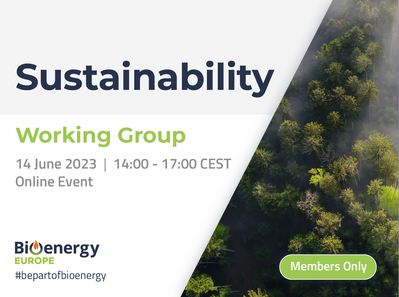
Bioenergy Europe welcomes the European Commission’s proposal for a Carbon Removal Certification Framework (CRCF) put forward in November 2022 with the goals of developing a trustworthy system to quantify and valorise removals and achieving climate neutrality by 2050.
The proposal outlines the start of a process, and we support a sound and harmonised governance framework that is much needed for this essential sector. There is too much fragmentation in the voluntary space for carbon certification; and having a scheme developed at the EU level will provide greater certainty, transparency and clarity for the industry. It is also a chance for the EU to set the standard and lead the way in establishing a carbon removal certification framework that could be used as a blueprint across the world. Bioenergy Europe also welcomes the EU Commission’s proposal for the certification of carbon removal, which allows for the clear differentiation between fossil carbon and renewable biogenic carbon.
However, as it is right now, the proposal requires further improvement to ensure that the QU.A.L.ITY (Quantification, Additionality and baselines, Long-term storage, Sustainability) criteria it includes produce reliable and high-quality net removals. We would like to outline the following issues that should be considered in preparation of the final EU document:
Definition of the notion of permanence is needed to enable a due recognition of biochar. Within the current proposal, the notion of permanence is exclusively reserved for carbon removal methods that have an integrated governance with the European CCS Directive. While this approach is suitable for Bioenergy with Carbon Capture and Storage (BECCS) and Direct Air Carbon Capture and Storage (DACCS), it closes the door to processes like Biochar Carbon Removal (BCR) and other novel solutions that are under development today. Therefore, the principles that form a prerequisite for permanent removal should be clarified – without specifying which carbon removal techniques merit the assessment and hence the label.
Sustainability criteria and necessary harmonisation with existing legislation. In our view, the carbon removal activity itself should be considered as contributing to the fight against climate change; hence, in order to maintain consistency between various legislation, Article 7.1 should use the same wording as Article 3 of the Taxonomy Regulation (EU 2020/852). This means that carbon removals activities should above all respect the principle of “no significant harm” to the environment, instead of impact and broader (“=sustainability”) criteria.
The CRCF represents an opportunity for building the right policy framework that will underpin investments in both natural and industrial carbon removals (e.g., BECCS, DACS and BCR). With this in mind, we welcome a discussion of how certified industrial carbon removals will be incorporated under the EU’s 2040 GHG emission reduction target and the underlying scenarios.
It is vital that we encourage a wide recognition of the EU framework through adoption by internationally active certification schemes. The EC should therefore advance the harmonisation of removal certifications beyond European borders, while acknowledging opportunities for private contributions within the emerging Article 6 framework at the UNFCCC. We would like to see a future possibility for those projects which are based outside the EU to apply under the voluntary EU certifications scheme. While such certificates may need to be treated differently for the purpose of inclusion in a registry, this would speed up the process of harmonisation beyond EU borders and boost emerging markets.




